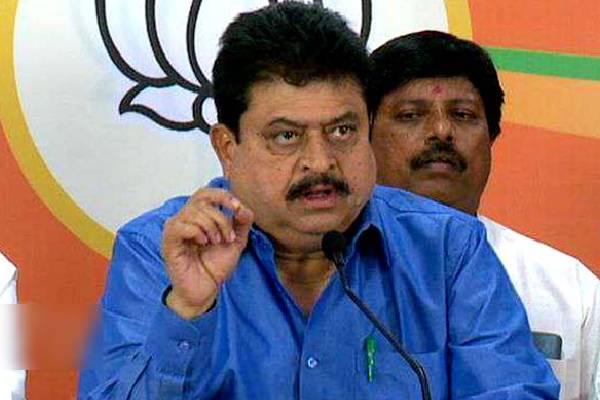Demonetisation Anniversary
The announcement of demonetizing 500 and 1000 notes, that came exactly one year back, shook the country one year back. It triggered a wide debate across the country. Initially, the debates also were driven by emotions – at one extreme was people supporting demonetization because of the ‘so called patriotism’ and at the other extreme was the people condemning demonetization because of the “personal inconvenience” they faced. But now, as almost one year since the demonetization, people got a fair understanding of the consequences. But still there are some unexplored dimensions during the debates on demonetization. Let’s have a look on it without touching the political aspects of the issue.
Immediate consequences: When the announcement came, many thought that demonetizing the big notes will be definitely the first step in eradicating the issue of black money problem. But what happened is this. Immediate consequence was the huge mismatch between amounts deposited and currency in circulation as the demonetization move squeezed out all the money from people and economy into banks. So, people had less money in their hands to spend and as a consequence, all business have slowed down in last November and December. People were buying only what was essentially needed. Shopping malls, movie theaters, food courts etc all were mostly empty and that led to lay-offs. With lay-offs, there was more unemployment and again people had lesser money which again led to less spending and that again led to unemployment.This was a loop. So, while money in the banks was growing, people were unemployed. This is classic example of non-inclusive growth, that we witnessed in recent times.
Cashless transactions: There was weekly limit of 20,000 on withdrawal for almost 2 months (later they increased it to 24000 though) to promote cashless transactions. Government thought that with such cash limit people would move to digital transactions. But what practically happened is this. People preferred to keep the cash with them even if they have and use credit cards/ debit cards or online transactions wherever possible. So, to avoid cash scarcity, they bought vegetables in super market instead of rythu bazars (where farmers or poor people sell vegetables), bought groceries in big super markets instead of small retail/ kirana stores. So again, its the poor and small retailers that got impacted more. Yes, this is also another kind of non-inclusive growth.
Liquid cash is not the main form of black money: Whenever, a government employee is caught in ACB or any rich person is raided by income tax department, one thing is obvious, that most of the black money they have is stored in form of land and gold. There is no proper control by CENTRAL government on land registration transactions. Agreed, as per 7th schedule of constitution, ‘land’ is in state list but not central list and that’s the major reason why land reforms failed in India except in few communist states like west Bengal and Kerala. But without dealing with land registrations it is IMPOSSIBLE to curb black money in India. With latest technology like google maps, entire earth is on map. can we think of, at least in future, something like – land registered in registration office is also shown in map and all the registrations also tracked with pan-card? I mean registration offices should able to point to the plot in the map and attach pan-card to that area in map. This will reduce benami transactions. May be its too much of an aspiration. Same goes with gold. Without properly controlling land and gold transaction, India can never handle the issue black money. Moreover, lot more black money is there in share markets especially through participatory notes etc through which one can do transactions without revealing end-buyer’s identity.
It’s the common man who suffered a lot: Black money doesn’t only mean the money that is stored in suit cases or under beds. It also includes the money in circulation with poor who do not have bank accounts and the money that was never deposited into banks.For e.g. farmers, mostly save their agricultural income (which is non-taxable, as per govt rules) at their homes. People from unorganized sectors like street vendors, and many others etc also save money in cash for various reasons like daughter’s marriage, kid’s education etc. These people, most of whom are illiterates, are the ones who got panicked most. They were literally in tears. Some of them visited the banks for the first time in their life time. Some elderly people died in the queue lines before the banks. Some were refused medical treatment. Some people couldn’t do funeral rituals for their family members. Thosed 2 months, people lived a different life than what their usual lives. Going to banks or ATMs was almost a daily routine. street vendors starved because of lack of business. Daily wage labors (especially in construction industry) didn’t have food to eat. In the return, what people received in this one year is an empty promise that future will be good.
Finally, What happened with demonetization was just an attempt to flush out already accumulated money with no assurance of what so ever to curb or mitigate future accumulation in new notes. But even that attempt was also not successful. Government (led by any political party) need to understand some basic things
-Without properly dealing with land, gold and p-notes of share market it is not possible to curb black money in India. There needs to be a multi-pronged approach to handle this instead of a narrow, single pronged approach like demonetization.
-Without eliminating corruption at grass level, it is not possible to curb black money. There was no attempt by the government even after demonitization move to address this age old issue.
-Why 2000 note is introduced and how it helps preventing black money accumulation is an unanswered question, even after one year of demonitization.
-without improving literacy (forget financial literacy, i am talking ‘literally’ about just literacy – people will be still scared to deposit in banks.
What could have been done-
There is a principle of 80/20 (Pareto principle) that says – 80% of wealth is accumulated with 20% of people. Same applies to black money. 80% of black money comes from 20% transaction. Those could have been targeted first by the government instead of putting entire country on the queue lines before the banks.
-zuran



































